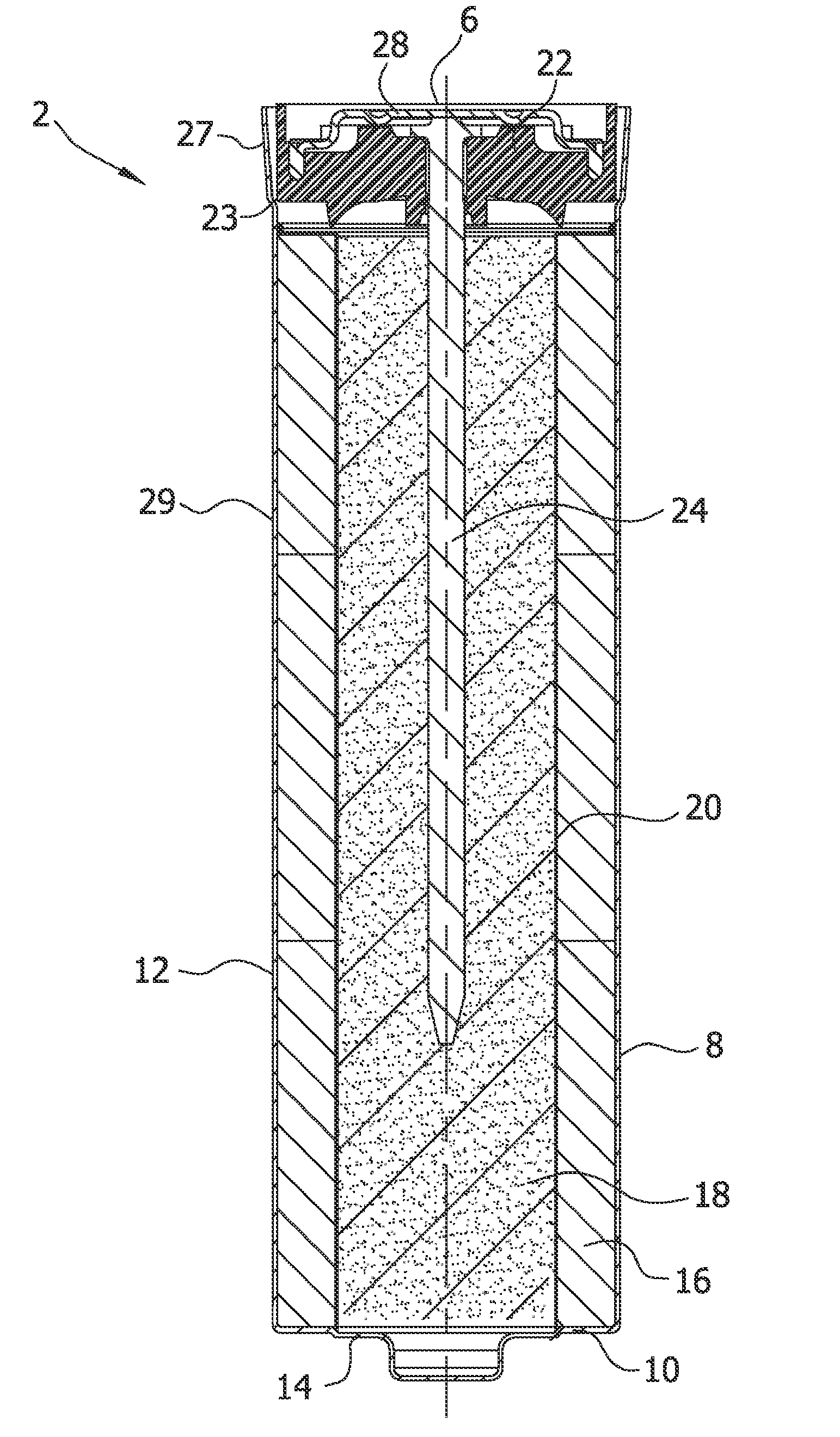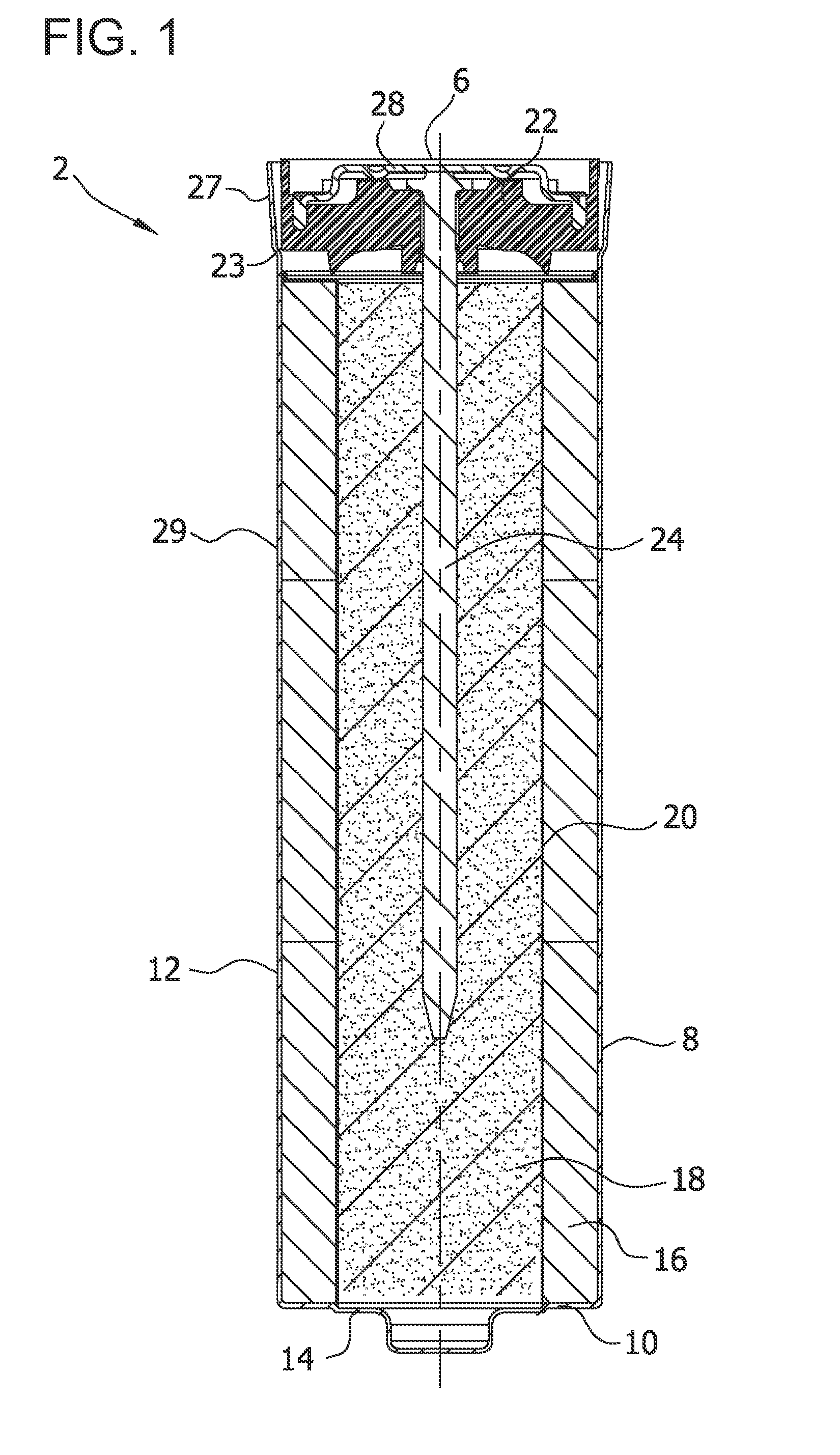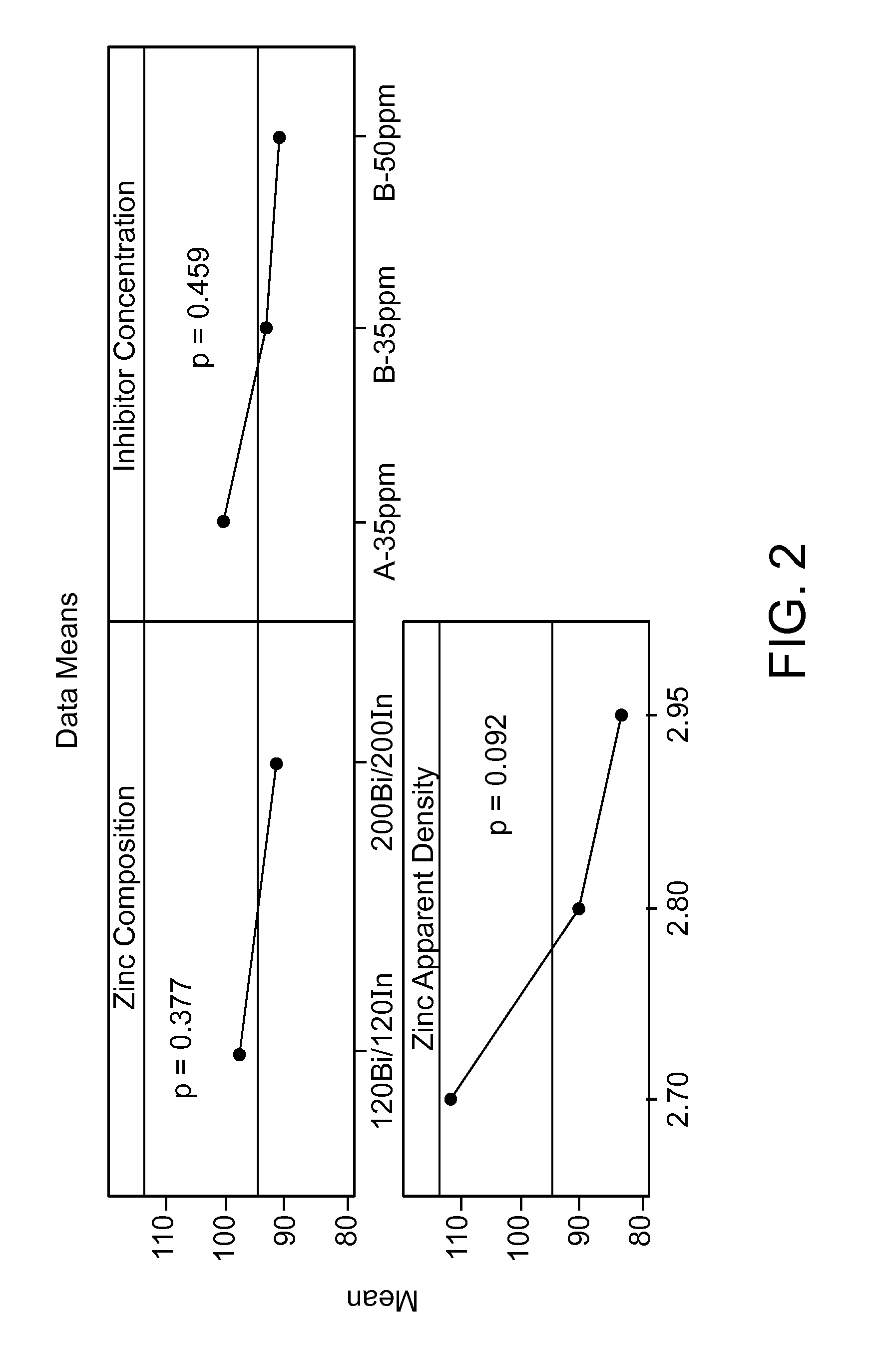Alkaline Cell With Improved High Rate Capability
- Summary
- Abstract
- Description
- Claims
- Application Information
AI Technical Summary
Benefits of technology
Problems solved by technology
Method used
Image
Examples
example 1
DSC Performance with Alloys Containing Fines
[0090]Gelled anodes were prepared in accordance with the improvements of the present disclosure. FIG. 2 displays the mean DSC pulse performance of LR6 cells made at three gassing inhibitor conditions with two different zinc alloys as the anode active material. The gassing inhibitors tested were RHODAFAC® RM-510 (A-35 ppm) and RHODAFAC® RS-610 (B-35 ppm and B-50 ppm). The two zinc alloys tested included 120 ppm of both bismuth and indium and 200 ppm of both bismuth and indium. The zinc apparent density values in FIG. 2 indicated as 2.70, 2.80 and 2.95 g / ml correspond to the average apparent density of the two alloys at about 2.71, 2.83 and 2.94 g / cc. The zinc alloys contained about 15%, by weight, of fine particles (i.e., particles having a size of about 75 microns or less).
[0091]As noted above, the three different apparent densities tested averaged 2.94 g / cc, 2.83 g / cc and 2.71 g / cc. As can be seen in FIG. 2, independent of the type of all...
example 2
[0092]Cells prepared in accordance with the specifications of Example 1 (i.e., same apparent densities, zinc alloys, fine %, gassing inhibitor content, etc.) were tested for their cell amperage after a drop test.
[0093]Prior to the drop test, cell amperage of each cell was taken. Once again, as can be seen in FIG. 4 (which displays the mean cell amperage), cells with the lower apparent density had the higher cell amperage. This is in accord with the expectation of increased particle-to-particle contact with decreased apparent density. The zinc apparent density values in FIG. 4 indicated as 2.70, 2.80 and 2.95 g / ml correspond to the average apparent density of the two alloys at about 2.71, 2.83 and 2.94 g / cc.
[0094]For the drop test, the flash amps and open circuit voltage (OCV) of 15 AA batteries were recorded. Each battery was then rolled off of a flat surface 5 times from a height of about 102 cm onto a vinyl covered floor. The batteries were then allowe...
example 3
Partial Discharge Gassing of Cells
[0096]Cells prepared in accordance with the specifications of Example 1 (i.e., same apparent densities, zinc alloys, fine %, gassing inhibitor content, etc.) were tested for partial discharge gassing. The zinc apparent density values in FIG. 5 indicated as 2.70, 2.80 and 2.95 g / ml correspond to the average apparent density of the two alloys at about 2.71, 2.83 and 2.94 g / cc.
[0097]A potentially adverse effect of lowering the anode active material apparent density is a tendency of increased partial discharge cell gassing, which can be seen in FIG. 5 (which displays the mean cell gassing in ml of volume). An appropriate gassing inhibitor and appropriate concentration amounts can be used to suppress cell gassing, however, as seen in FIG. 5 with additions of RHODAFAC® RM-510 or RHODAFAC® RS-610 inhibitors.
PUM
 Login to View More
Login to View More Abstract
Description
Claims
Application Information
 Login to View More
Login to View More - R&D
- Intellectual Property
- Life Sciences
- Materials
- Tech Scout
- Unparalleled Data Quality
- Higher Quality Content
- 60% Fewer Hallucinations
Browse by: Latest US Patents, China's latest patents, Technical Efficacy Thesaurus, Application Domain, Technology Topic, Popular Technical Reports.
© 2025 PatSnap. All rights reserved.Legal|Privacy policy|Modern Slavery Act Transparency Statement|Sitemap|About US| Contact US: help@patsnap.com



